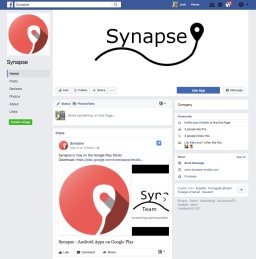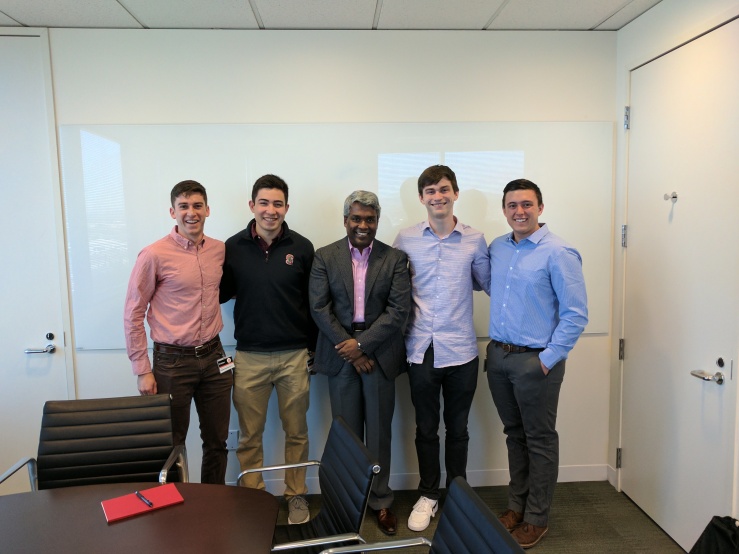We’ve learned a lot over the last few weeks. After building our proof of concept and presenting to our corporate liaisons at Oracle Headquarters, we moved on to collecting feedback from as many sources as possible so that we could launch into our next big product cycle and move one step closer to deployment – and everyone had something useful to say.
We were lucky enough to have the chance to meet with Bill, a CERT from the Palo Alto area who’s trained to be a community leader to step up and help respond in the event of a disaster, as well as Sandy, a member of one of FEMAs Disaster Medical Assistance Teams (DMAT). They both gave us valuable insights about our product, both as users and as sources of information about the natural disaster space. Kathy Davies from the Stanford d.school also gave us design centered feedback on our interactions and on engaging users, and Matt Huang from Sequoia talked with us about our target customers and acquiring users.
Our post-Proof of Concept user testing culminated in team Synapse’s most exciting endeavor yet: a trip to Tokyo, Japan.
Synapse chose to visit Japan because the country faces more earthquakes than almost any other area on earth. As a result, cities like Tokyo have extensive disaster preparedness infrastructure. Since the 9.1 magnitude Tohoku earthquake hit Japan in 2011, Tokyo residents have engaged with disaster preparedness products ranging from guidebooks to apps to news sources. Synapse wanted to investigate these products to learn which features were most useful to consumers, and which user needs were still unsolved. Over the course of 5 days, meetings with Oracle Japan employees, IDEO design director Greg Perez, CS210 alumnus Yuri, and Canadian expats Kirk and Agnes helped us better understand the disaster preparedness landscape in Tokyo. And luckily for us, the cherry blossoms were in bloom!

At Oracle, product leaders talked to us about product internationalization. What might it mean to deliver a product to a Japanese audience? How can early design decisions make a product internationally accessible? At the end of our meeting, we were lucky enough to experience a traditional Japanese tea ceremony in Oracle’s tea room. Many thanks to Junichi Chigira, Reiko Saito, and the many other Oracle employees that made our visit such a great experience. Unfortunately, we couldn’t take pictures inside the office, so here’s one of us in the lobby:

At IDEO, Greg chatted with us about Japanese design standards, and about existing disaster preparedness tools in Tokyo. We learned about the “Yellow Book”– a large disaster preparedness manual, which is designed with comic illustrations to make preparedness accessible.
Conversations with other Tokyo residents–Yuri, Kirk, and Agnes–gave us a much better idea of how Tokyo residents reacted after the 2011 earthquake. How were risks about radiation perceived? What information sources were helpful? Were resources readily available? We were amazed to realize that for many Tokyo residents, finding basic supplies like diapers was close to impossible after the disaster. We were also surprised for many individuals, sensationalized news reports were often more accessible than formal updates from the Japanese government. One of the most striking facets of Japanese disaster preparedness was the use of technology–many residents used apps to track earthquake reports, and the Japanese supported an alert system to give SMS alerts in the event of a large earthquake.
Overall, our meetings in Japan gave us a picture of a culture which is extremely developed in its disaster preparedness–apps, guidebooks, and government updates were all very advanced. Importantly, all of our meetings highlighted important shortcomings in current technologies. We feel well-positioned to meet user needs which current products are failing to design for.
Through all of our conversations, we gained a lot of key insights about the direction of our product, and what to focus on as we tackle our second quarter. Our user testing taught us a lot about usability, specifically about interactions with a map and how we can make them as intuitive as possible. Our hosts from Oracle Japan taught us about internationalization, something we’ll consider deeply in our design cycles from now on. Additional needfinding conversations both in and out of Japan taught us a lot about the priority of information in a disaster, what types of information we can still include, and disaster preparedness applications. Our trip to IDEO really reminded us about user-centered design, and gave us ideas about how we can make Synapse useful in more than just a disaster situation, so that it’s maximally effective when disaster strikes.
One of our greatest finds while in Tokyo was the suite of disaster applications in Japan. This really helped us understand what needs were being met already, and how in most cases, although an application might solve one or two needs out of many, there still isn’t really an information solution that incorporates some of the most important features of a disaster application.
On top of all of this, we got so much information and inspiration just from being in Tokyo. The background hum of emergency preparedness was really present in the city, and is an experience that will color our product.
Now that we’re back in the swing of the quarter, we’re trying to hit the ground running and launch into our next big product cycle. Once we had recovered from jet lag, we got together in the Loft for a “Big Think” design meeting about the future of our product. We revisited who our users were, recentered on our most important features, and prioritized what we’ll need to do in order to get ready for launch. We also created a “dream product” featureset, which includes everything we might like to see in our application, even if it might not happen by the end of the quarter (or be technically possible – yet!). Finally, we talked about our launch and deployment strategy, and determined our key performance indicators – the pieces of data that will best inform whether or not we’re hitting our usage goals.
We’re excited to dive back into development, and will be back soon with more updates on what we’ve built.










